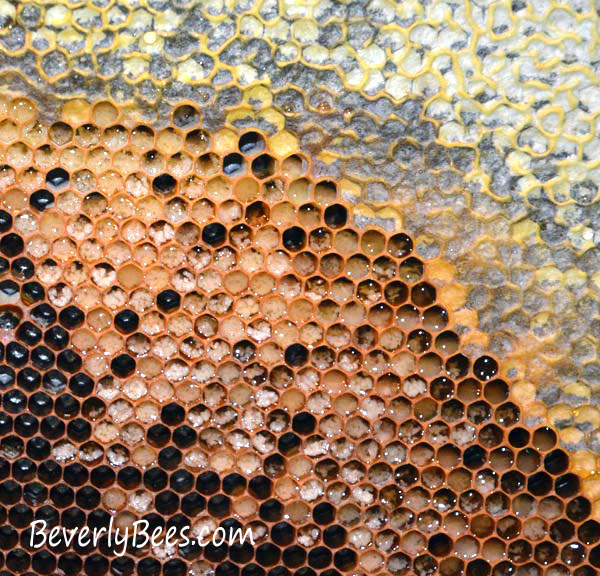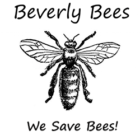What are those white dots in my honey comb?
When inspecting your hive first thing in the spring after a long cold winter, you may pull out a frame that looks like the picture below. It is filled with white wet looking crystals or chunks. You may mistake this for some kind of pest or disease but the real answer is very simple – it is just honey – crystallized honey in comb. Crystallization happens when honey’s texture changes from a more liquid to a more solid substance as crystals start to form from the sugars in the honey.
Why does honey crystallize?
Raw honey naturally crystallizes over time and is temperature dependent, with the most rapid crystal growth occurring between 50-70 degrees Fahrenheit. The floral source of your honey also factors into how fast your honey will crystallize, meaning some honey will crystallize faster than others. Black Locust honey is a slow crystallizing honey while Goldenrod honey crystallizes very quickly. The water and the sugar content ratio (fructose to glucose ratio) in the nectar determines how fast the honey will crystallize. Honey with a higher glucose content crystallizes quicker.

If the bee cluster was not able to keep this honey warm enough over the winter, or it was a rapidly crystallizing honey, you may see crystallized honey comb in your hive in the spring. If you feed sugar or sugar syrup to your bees, sometimes you will also see sugar crystals that look similar as well.
What do I do about crystallized honey comb?
While heating honey can cause crystallized honey to revert back to the liquid state, when you have crystallized honey comb, the easiest thing to do is feed it back to the bees. This honey will be difficult, if not impossible, to extract. If you just save it for the bees, generally they will do a good job cleaning it up. You can put it in the brood boxes, in the supers, or even over the inner cover of the hive for the bees to eat and clean out. Now you know!
